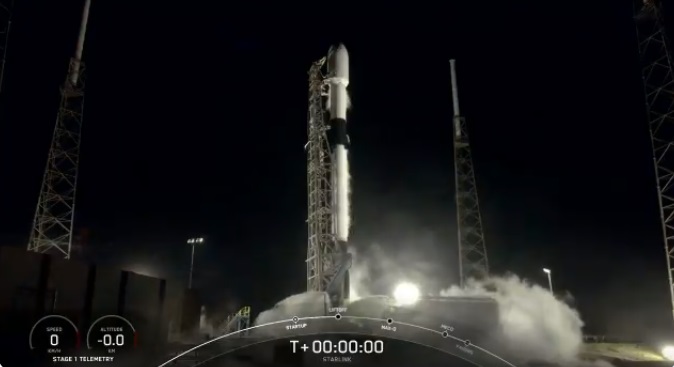SpaceX is the uncrowned king of the game, and dare I say so, it might even be giving NASA a run for its money. The company has been completing launches left and right, including ones for its Starlink constellation and ones that contain actual human astronauts. Nearly a week after its Crew-2 mission launch was successfully completed, Elon Musk’s brainchild launched a new batch of Starlink satellites on a Falcon 9 rocket on Wednesday, from Space Launch Complex 40 at Cape Canaveral, successfully deploying 60 Starlink Internet network satellites into orbit.
This marks the 24th Starlink launch so far, adding to the over 1,000 satellite strong batch that SpaceX has already deployed in Earth’s orbit. This is also the first Starlink launch since April 7, and another 229-foot-tall Falcon 9 rocket is scheduled to haul the next batch of Starlink satellites to space next week, and yet another one in May.
The Falcon 9 took off without any hitches on Wednesday, and its first stage separated to land in the Atlantic Ocean a few hundred miles east of Charleston, South Carolina, where it was recovered by SpaceX’s drone ship “Just Read the Instructions,” marking the 81st successful recovery of a Falcon rocket booster.
1,374 Starlink satellites are currently in orbit.
The second stage deployed its payload of satellites about an hour after liftoff into orbit at about 550 km above the Earth’s surface.
“Shortly they will deploy their solar array and over the next few days and weeks they will distance themselves from each other and use their on board ion thrusters to make their way to their operational orbit,” SpaceX said. They will join the rest of the Starlink satellites already in orbit.
The launch came after the Federal Communications Commission on Tuesday approved a request by SpaceX to fly the rest of the near-term Starlink spacecraft at lower altitudes. This is the 10th batch of Starlink satellites that SpaceX has launched in 2021. The Starlink satellites are being sent up to reach SpaceX’s goal of expanding the availability, quality, and coverage of its high–speed, low-latency, low Earth orbit broadband internet network.
Since SpaceX has permission to launch as many as 30,000 satellites, this launch could be just one of many more to come. The Federal Communications Commission has already given SpaceX the authority to deploy some 12,000 Starlink satellites operating at certain frequencies and at a range of altitudes and inclinations in low Earth orbit. SpaceX hopes to have continuous coverage throughout the world after 28 launches since they do not have full connectivity globally yet.





